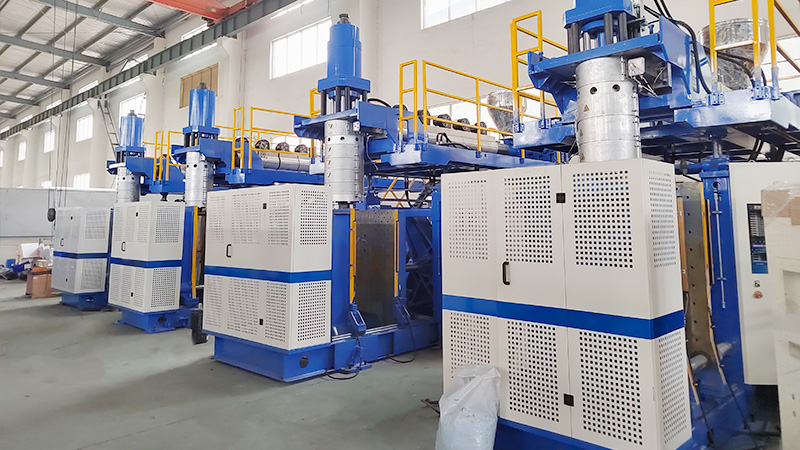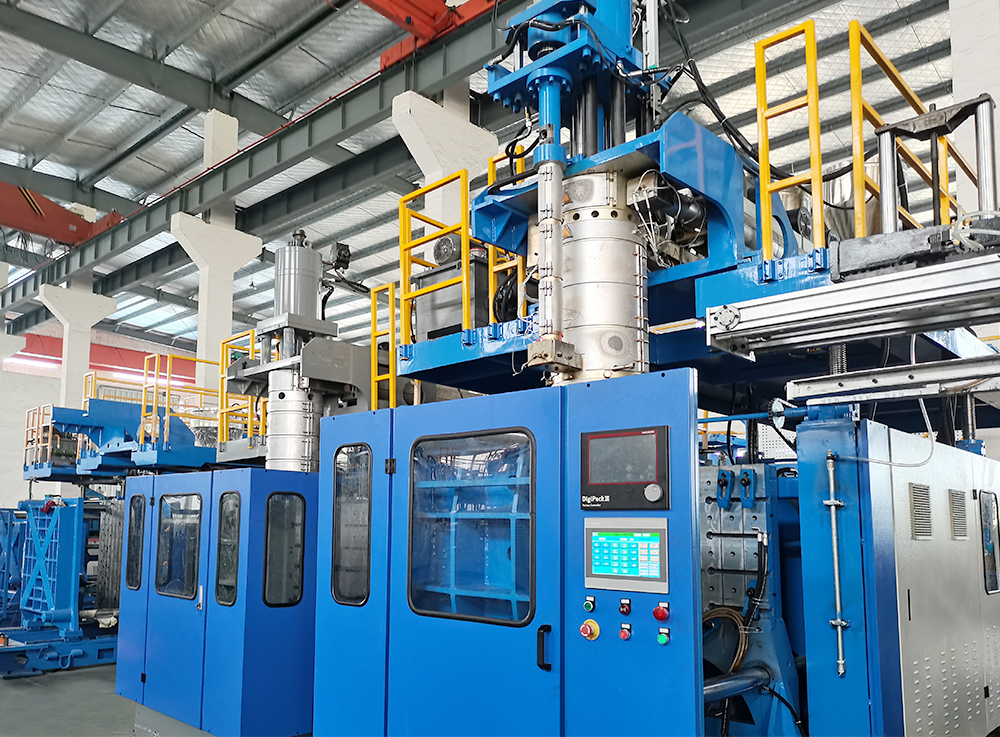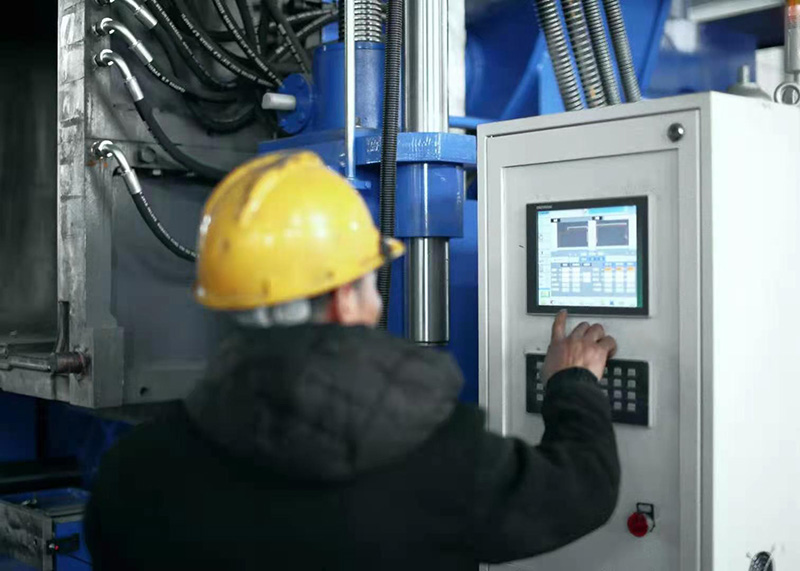
Blow mould: Any of various molds and tools used in industrial production for injection molding, blow molding, extrusion, die casting or forging, smelting, stamping, etc., in order to obtain desired products. In short, a mold is a tool used to make a shaped object. The tool is made up of different parts, and different molds are made up of different parts. The shape of the product is processed by changing the physical state of the forming material. It is called the "mother of industry".
The mold has a specific profile or cavity shape, and the blank can be separated according to the profile shape (blanking) by applying the profile shape with a cutting edge. The three-dimensional shape of the blank can be obtained by using the cavity shape. Die generally includes moving die and fixed die (or punch die and concave die) two parts, the two can be separated and combined. The parts are taken out when separated, and the blank is injected into the mold cavity when closed.
Die is a precision tool, the shape is complex, bear the billet expansion force, the structural strength, stiffness, surface hardness, surface roughness and machining accuracy have higher requirements, the development level of die production is one of the important symbols of the level of mechanical manufacturing.
Die selection of blow molding machine is a very important part of the whole die manufacturing process.
What principles should be followed in the selection of molds?
Mold selection of blow molding machine three principles
The mold should meet the working requirements of wear resistance and toughness, meet the technological requirements, and meet the economic applicability of the mold.

I The mold meets the working conditions
When the blank enters the mold cavity, it flows along the surface of the mold cavity, causing friction between the surface of the mold and the blank, resulting in the failure of the mold due to wear. Therefore, the wear resistance of the material is one of the most basic and important properties of the die.
Hardness is the main factor affecting wear resistance. Generally speaking, the higher the hardness of the die parts, the smaller the wear amount and the better the wear resistance. In addition, the wear resistance is also related to the type, quantity, shape, size and distribution of carbides in the material.
2. Toughness
Most of the working conditions of the die are very poor, and some often bear a large impact load, leading to brittle fracture. In order to prevent the die parts from breaking suddenly in the work, the die must have high strength and toughness.
The toughness of the die mainly depends on the carbon content, grain size and microstructure of the material.
3. Fatigue fracture performance
In the working process of the die, fatigue fracture often occurs under the action of long-term cyclic stress. The fracture forms include low energy multiple impact fatigue fracture, tensile fatigue fracture, contact fatigue fracture and bending fatigue fracture.
The fatigue fracture performance of die mainly depends on its strength, toughness, hardness and the number of inclusions in the material.
4. High temperature performance
When the mold operating temperature is higher, the hardness and strength will be reduced, resulting in premature mold wear or plastic deformation failure. Because the mold material should have high tempering resistance stability, to ensure that the mold has high hardness and strength at working temperature.
5. Resistance to cold and heat fatigue
Some molds are in a state of repeated heating and cooling during the working process, which makes the surface of the cavity subject to tensile and pressure-induced stress, leading to surface cracking and spalling, increasing friction, hindering plastic deformation, and reducing dimensional accuracy. Resulting in mold failure. Thermal fatigue and cold fatigue are one of the main failure forms of hot working die and should have high resistance to cold fatigue and thermal fatigue.
6. Corrosion resistance
Some moulds, such as plastic moulds, work in plastic. Due to the presence of chlorine, fluorine and other elements in plastic, after thermal analysis, strong corrosive gases such as HCI and HF erode the surface of the mold cavity, increase its surface roughness and aggravate wear.

II The mold meets the technical performance requirements
Die making usually involves several processes such as forging, cutting and heat treatment. In order to ensure the quality of the mold and reduce the production cost, the material should have good malleability, machinability, hardenability, hardenability and grindability, and small oxidation, decarbonization sensitivity and quenching. Deformation and cracking tendency.
1. Forging ability
It has low hot forging deformation resistance, good plasticity, wide forging temperature range, low forging crack tendency and network carbide precipitation.
2. Sealing machinability
Spheroidization annealing temperature range is wide, annealing hardness is low, fluctuation range is small, spheroidization rate is high.
3. Machinability
Large cutting capacity, small tool loss, low surface roughness.
4. Sensitivity to oxidation and decarbonization
When heating at high temperature, the oxidation resistance is good, the decarbonization rate is slow, the heating medium is insensitive, and the pitting tendency is small.
5. Hardening
After quenching, the surface hardness is high and uniform.
6. Hardening
After quenching, a deeper hardening layer can be obtained, which can be hardened by a mild quenching medium.
7. Hardening deformation and cracking tendency
Conventional quenching volume change is small, shape warping, deformation, abnormal deformation tendency is small. Conventional quenching crack sensitivity is low and insensitive to quenching temperature and workpiece shape.
8. Abrasive ability
The relative loss of the grinding wheel is small, the grinding amount without grinding is large, and it is not sensitive to the quality of the grinding wheel and cooling conditions, so it is not easy to cause wear and grinding cracks.

III The mold meets the economic applicability
When choosing the mold, the principle of economy must be considered to reduce the manufacturing cost as far as possible. Therefore, under the premise of meeting the use performance, first of all, the price is low, carbon steel can not use alloy steel, domestic materials can not import materials. In addition, the selection of materials should also take into account the production and supply of the market. Selection of steel should be as small as possible, concentrated, easy to purchase.
Our mold production range of blow molding machines can range from 50ml to 1000 liters.
Our company can design plastic blow mold according to customer requirements, including various capacities of transverse and vertical mold, various types of plastic tray mold, various sizes of roadblock mold, IBC tank mold, floating tank mold, etc.















